New perk! Get after it with local recommendations just for you. Discover nearby events, routes out your door, and hidden gems when you sign up for the Local Running Drop.
Because everyone’s hands run at different temperatures, it can be challenging to review winter cycling gloves. What might be stifling for one person’s digits leaves another’s phalanges feeling frostbitten.
Thus, I’ll share a bit about my preferences so that you can adjust accordingly based on my opinion of each glove’s level of warmth. To keep it simple: I have relatively warm hands. In fact, my go-to gloves are thin, wool gloves—DeFeet’s Duragloves—which keep my hands as warm as I want them down to about 45 degrees. After that, I’ll boost the insulation.
What to look for in gloves
There are several key factors to keep in mind when buying gloves. First, of course, is how much warmth you need, and what the glove’s primary use will be. Balancing warmth with bulk is also crucial to a secure feeling on the handlebar and dexterity for other things like getting food out of pockets, working zippers, and so forth. A glove with maximum warmth and minimal bulk is the holy grail.
Just like winter cycling clothing, gloves come in a range of fabrics that help fight against wind and wetness, while still allowing your hands to breathe. It’s a difficult combination to balance, and it’s harder to layer as you would with jerseys and jackets. Some materials work better than others.
A glove’s construction is also crucial, as it determines both fit and durability. Look for gloves with reinforced areas between thumb and forefinger, on the palm, and at the fingertips. Any good glove will have a nice soft patch of material on the back of the thumb area and/or index finger for wiping the inevitable drips from the nose.
Finally, one of the most important areas of a glove’s design is at the cuff, as this determines how it will interface with the sleeve of your jacket or jersey. Some will have a lay-flat band that will go under the sleeve; others might have adjustable cuffs with straps that can wrap over a sleeve then be tightened down. In our experience, simple is better and leads to less bulk overall.
Another thing to consider is how many pairs of gloves you might want or need to invest in. Having a thin pair for cool days and something thicker and more luxurious for the really cold days is great. Having even more choices is ideal, as gloves are critical to having a good ride. Nothing kills your motivation faster than numb hands that can hardly pull a brake lever.
After testing a range of gloves, my favorite pair for cool, fall-like weather remains the DeFeet. When it gets significantly colder, the Assos bonkaGlove_evo7 is nearly flawless. Now, let’s take a closer look at some of our favorite gloves, starting with the warmest options.
Bontrager JFW Winter Glove
Trekbikes.com, $90
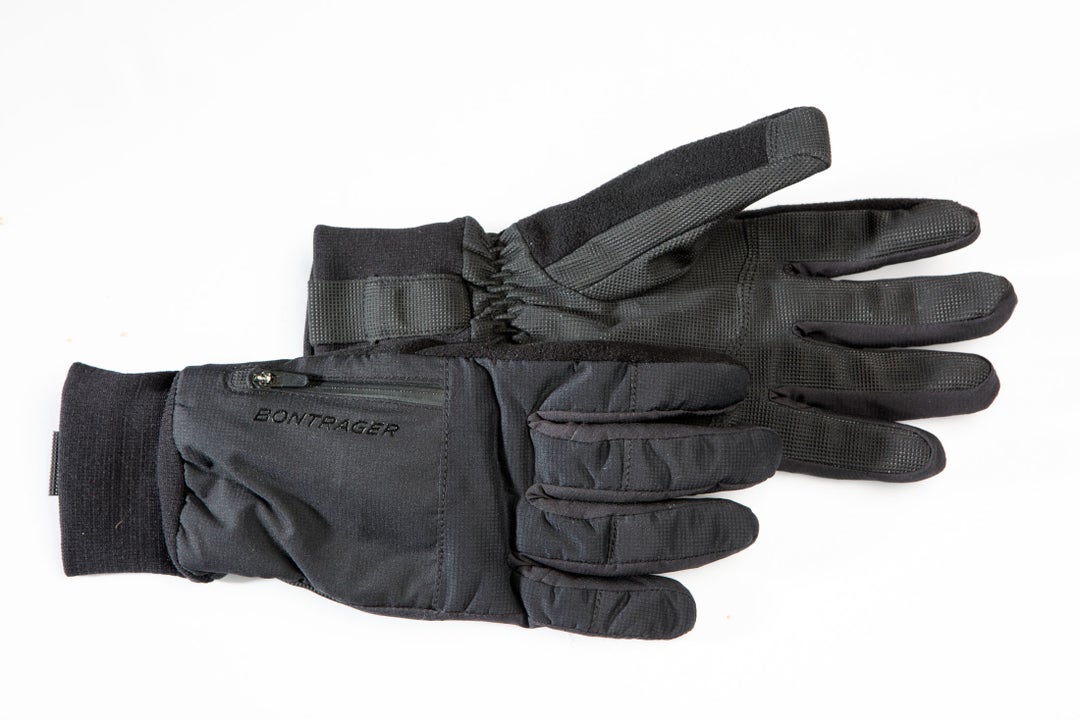
The Bontrager JFW gloves are a great choice for days when it starts cold and stays cold. They are suited to temperatures from the mid-20s to mid-30s, though they can easily be boosted with a disposable heat warmer via a zippered pocket on the back of the glove. Overall, the glove is slightly bulkier than the Assos (below), but still relatively compact relative to its warmth. A Profila Wind fabric with a durable ripstop material is used in the construction on the back of the hand, with 200 grams of Thinsulate providing insulation. The lining is made of Merino wool and 37.5 fabric technology provides additional warmth. The entire palm and fingers are covered in a pliable textured rubber surface, providing great grip even in wet conditions. The final touches include a generously-sized, soft fleece nose wipe on the back of the thumb and index finger, and a wrist pull-tab to aid in putting on and taking off this great glove. One thing we didn’t love was the slightly bulky cuff, which wasn’t perfect at going either over or under a jacket sleeve.
Assos bonkaGlove_evo7
Assos.com, $90
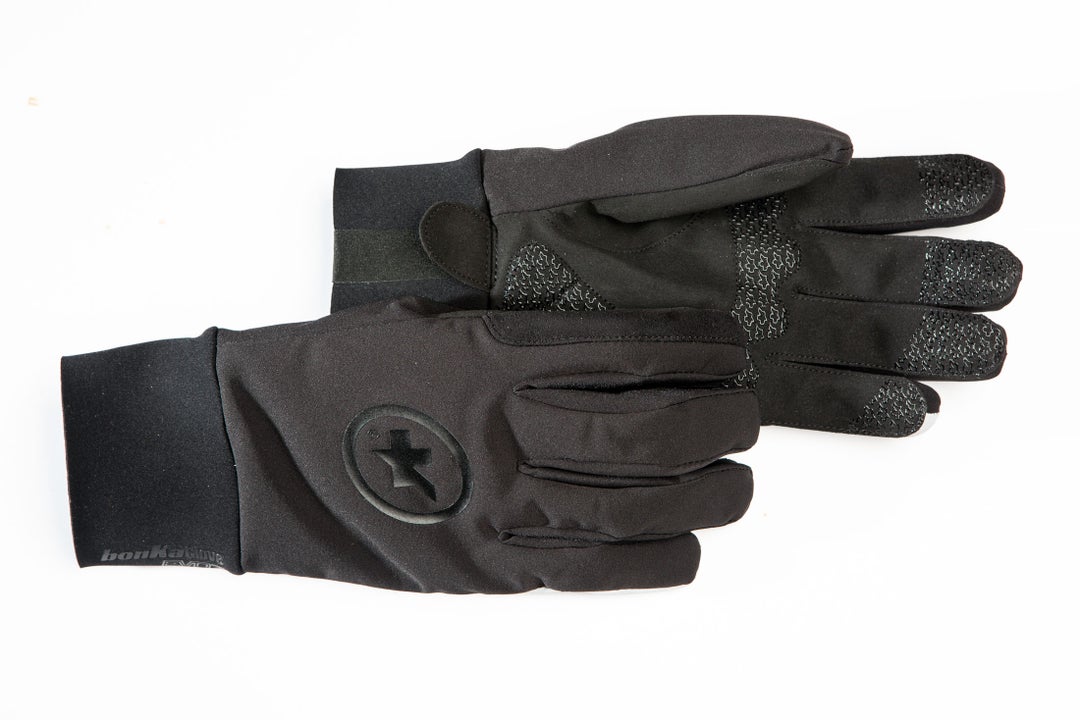
The bonkaGlove offers a great combination of warmth, streamlined design, grip, and weatherproofing, all in a minimalist design. Inside, the soft liner is plush and warm against the skin—just be careful when you pull the glove off as you can inadvertently pull the liner inside-out. The glove is constructed of Assos’s proprietary Airblock fabric to deflect wind. The gloves also have a water repellent treatment to fend off spray and light rains. One of the best features is the low-profile neoprene cuff that sits tight against the wrist; it’s effective at both locking in warmth and playing nice with a range of jacket and jersey sleeves. A small pull tab helps with getting the glove on and off. A soft, absorbent nose wipe on the side of the index finger adds a final touch. I found these gloves to be suited for temps in the mid-20s to mid-30s. All in all, this is one of the best pairs of gloves we’ve worn this winter, though the price is a bit steep.
Castelli Scalda Pro Glove
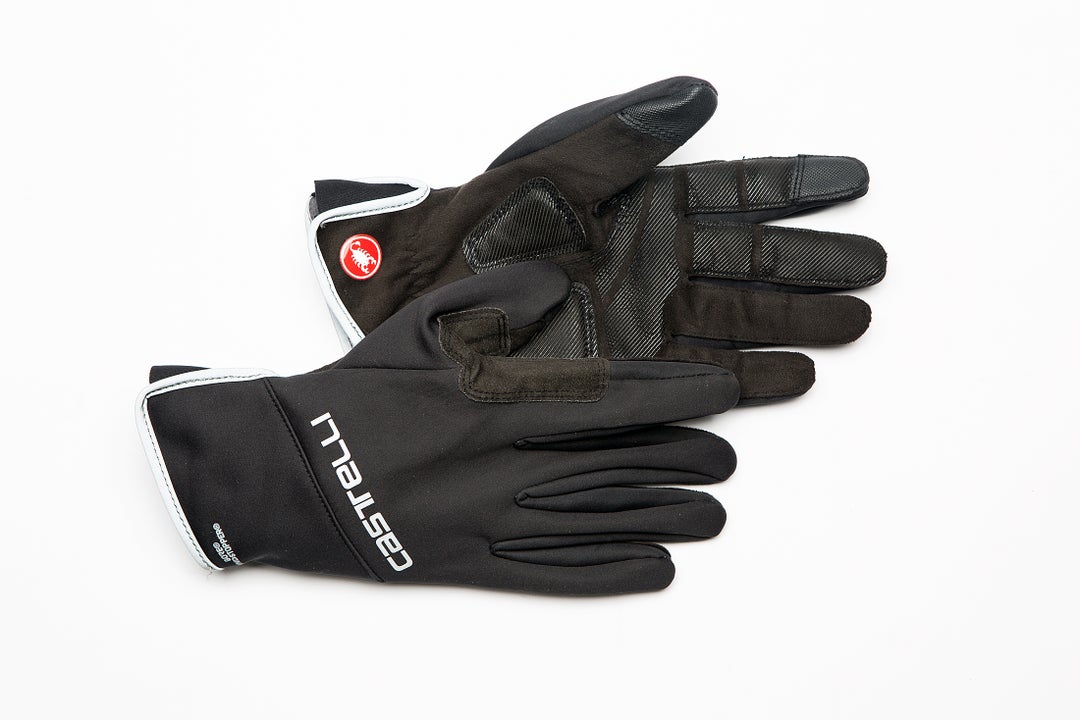
Geared for slightly warmer temperatures, the Scalda is another minimalist, no-flash glove that works well in the high-30s to high-40s range. (Castelli rates its gloves, putting the range at 45-59 degrees Fahrenheit.) The Gore Windstopper outer shell keeps any chill from penetrating inside, and the fleecy interior backing adds some warmth. The overall design is slim, with great grip in the palm, an asymmetrical cuff with high-stretch neoprene for easy on and off, and touchscreen-ready fingertips. One detail that is slightly lacking is a soft spot to wipe one’s nose—though the patch of reinforcing suede between the thumb/index finger junction can do double duty. Otherwise, this is a great glove for the bulk of my everyday riding—and also works well for Nordic skiing.
Pearl Izumi Escape Softshell Glove
Amazon.com, $45
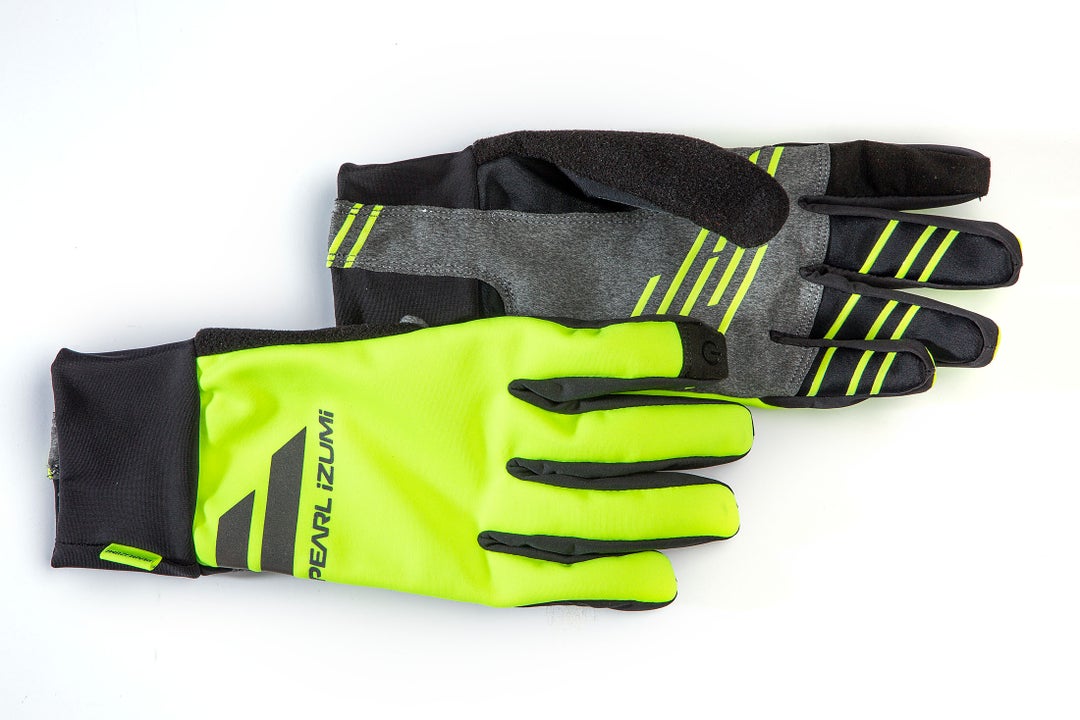
Also built for that high-30s to high-40s range (Pearl rates it at 35-40 degrees), the Escape is built with Pearl’s proprietary Select softshell fabric that offers both wind and water protection. Inside, the fleece lining feels warm against the skin. Conductive synthetic leather on the index finger and thumb is touchscreen compatible, and a soft fleece patch on the thumb allows you to wipe those pesky drips. The palm and three fingers have silicone grippers, as does the cuff for helping put them on. The long elastic cuff isn’t the tightest, but it does a decent job at keeping cold air out and also allows garment sleeves to tidily mate with the glove.
DeFeet Duraglove
Amazon.com, $33
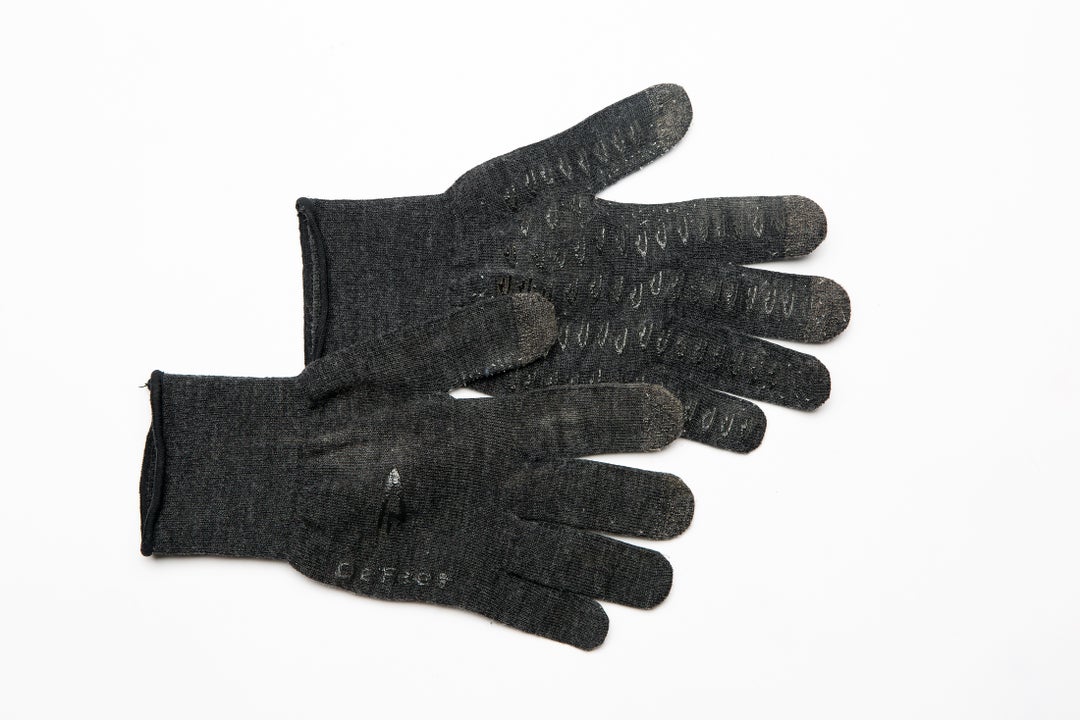
If all you need is a bit of warmth, the Duraglove is all you need. A stretchy merino wool blend knit fabric with grippers on palm and fingers are all that comprise this truly minimalist glove. Opt for the ET version with silver yarn in three of the fingertips if you want to use touchscreen devices. DeFeet recommends them for temperatures ranging from 40 to 60 degrees Fahrenheit. This has been my go-to glove for years, from racing to riding to Nordic skiing. Of course, since these gloves are simply knit wool, they do not block a cold wind like a Windstopper fabric does.
This article originally appeared at Velonews.com.